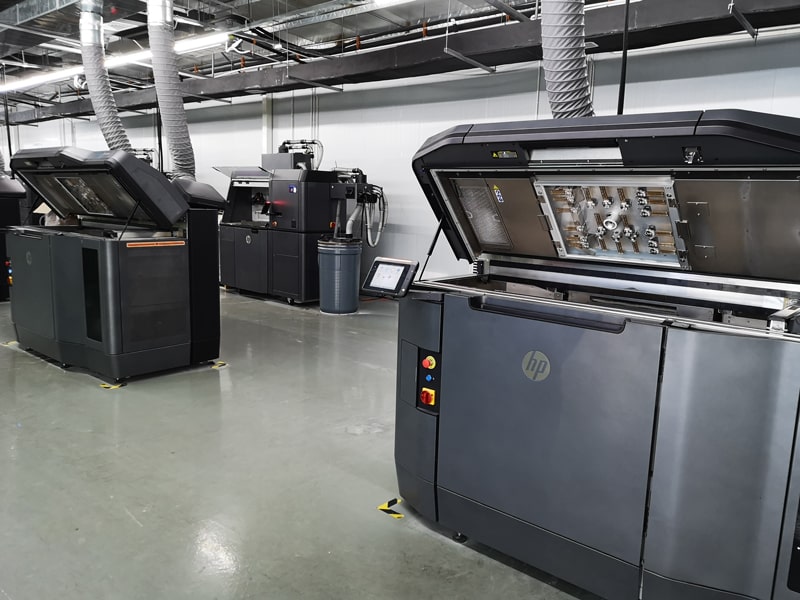+86 15322337411
Get A Quote
ISO 9001:2015 Certified
Currently, there are two notable nylon materials used in 3D printing - SLS nylon, which is based on SLS 3D printing, and HP nylon derived from HP's MJF technique. Let's delve into how these two prevalent nylon materials differentiate and how they are related.

Both Multi Jet Fusion (MJF) and Selective Laser Sintering (SLS) are powder bed-based 3D printing methods, using SLS and MJF nylon respectively. They commence with a powder foundation layered onto the print bed, building parts by either sintering or fusing these particles layer by layer. Their primary distinction is their source of heat: SLS employs lasers, while MJF utilizes an infrared-absorbing ink sprayed onto the powder bed, which is then fused using an infrared heat source.

On a general scale, the nylon varieties share comparable properties. However, variations in processes, precision, material types, costs, and delivery durations do exist. Here's a detailed breakdown:
● SLS Method: Starts by uniformly spreading a powder layer on the formation platform and pre-heating it to near sintering temperatures. Lasers then sinter the powder according to a set pattern, moving the platform down layer-by-layer until completion. Once done, cooling is necessary before part extraction.
● MJF Method: Like SLS, it begins by spreading powder on the formation platform and heating it. The main variance is the carriage equipped with inkjet nozzles that traverse over the powder, spraying fusion agents and detailing agents. An infrared heat source then sinters the sprayed sections. As with SLS, cooling is mandatory before removing the printed parts.
MJF stands out in terms of faster cooling and post-processing, courtesy of HP's specialized post-treatment station. Additionally, MJF reclaims 80-85% of its used powder, whereas SLS recycles just about 50%. This efficiency, coupled with quicker cooling, makes MJF more agile in production cycles, potentially reducing costs.
|
|
MJF |
SLS
|
|
Dimensional accuracy
|
±0.3%
(with lower limit on ±0.2 mm) |
± 0.3%
(lower limit of ± 0.3 mm) |
| Typical build size | 380 × 285 × 380mm | 160x160x300m |
| Common layer thickness | 70- 100 microns | 100-120 microns |
| Minimum wall thickness* | 0.6 mm | 0.7 mm |
| Minimum detail | 0.25 mm | 0.30 mm |

|
|
HP PA 12 |
SLS PA 12 |
|
Tensile Strength |
XY: 48 MPa Z: 48 MPa |
XY: 48 MPa Z: 42 MPa |
|
Tensile Modulus |
XY: 1700 MPa Z: 1800 MPa |
XY: 1650 MPa Z: 1650 MPa |
|
Elongation at break |
XY: 20% Z: 15% |
XY: 18% Z: 4% |